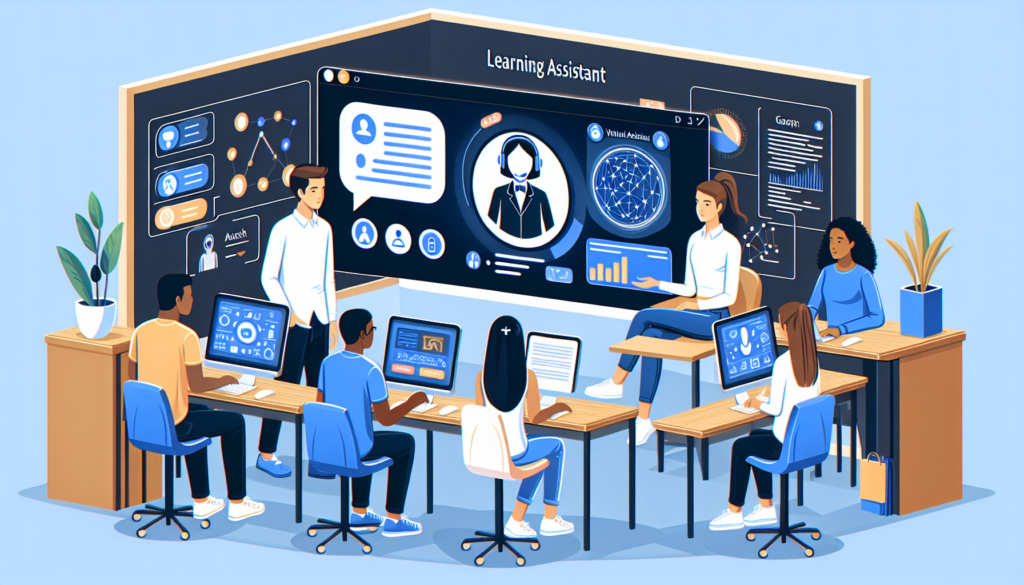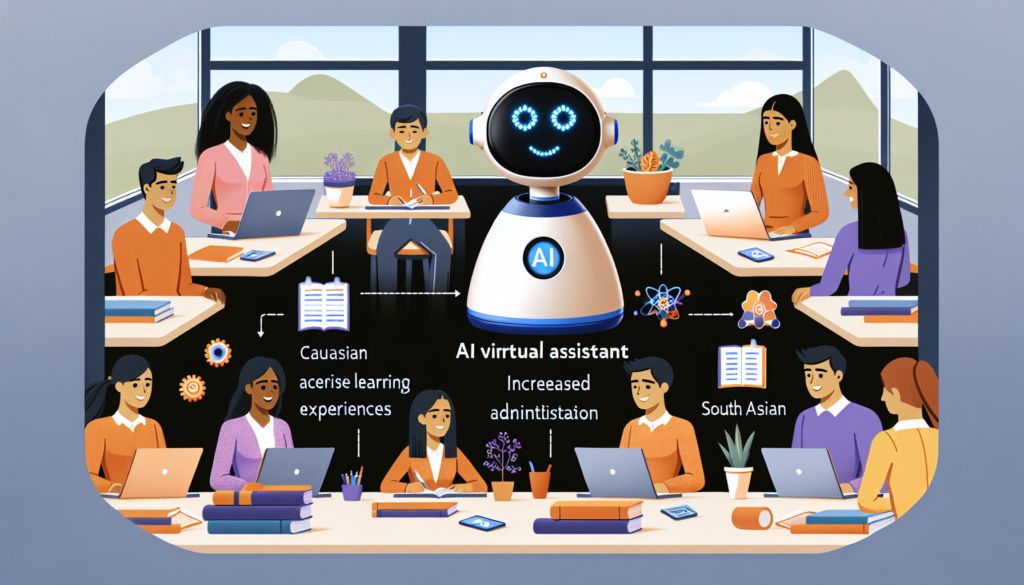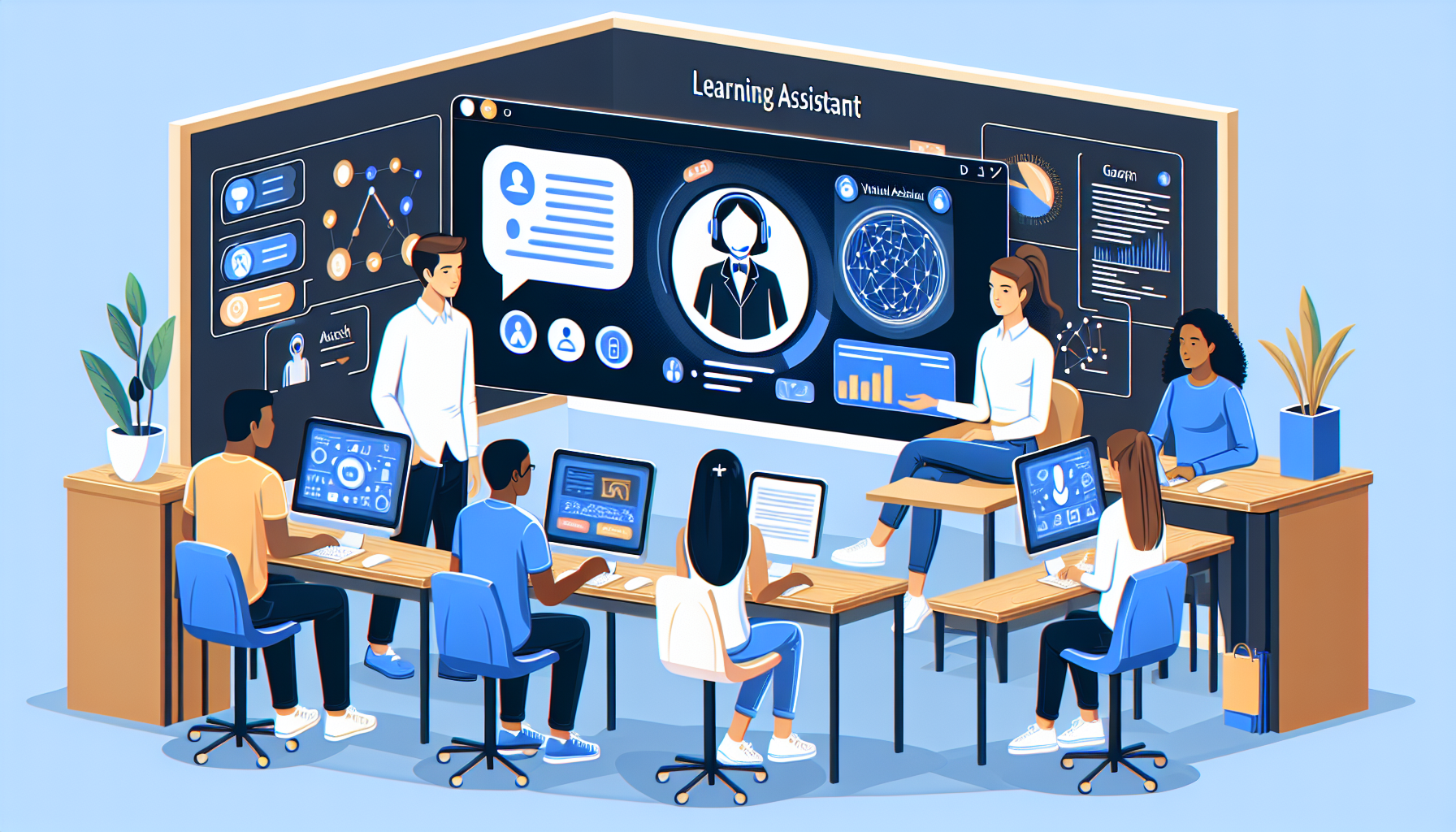Are you curious about how virtual assistants are making their way into the world of education and e-learning? In this article, we will explore the growing trend of virtual assistant adoption in these fields. From helping students with their homework to providing personalized learning experiences, these AI-powered assistants are revolutionizing the way we approach education. So, grab a cup of coffee and join us as we delve into the exciting world of virtual assistants in education and e-learning.

This image is property of images.pexels.com.
Overview
Virtual Assistant Adoption in Education and E-Learning is revolutionizing the way students learn and teachers teach. With advancements in artificial intelligence, virtual assistants are becoming increasingly popular in educational settings. These intelligent software applications are designed to provide personalized assistance and support to students, enhance teacher efficiency, and promote inclusive learning environments. By leveraging the capabilities of virtual assistants, education institutions can overcome various challenges, bridge educational gaps, and ensure that every student has access to quality education. In this article, we will explore the definition of virtual assistants, discuss their importance in education, and highlight the numerous benefits of their adoption in the field of education and e-learning.
Definition of Virtual Assistant
A virtual assistant, in the context of education and e-learning, refers to an artificial intelligence-powered software application designed to assist individuals in their learning or teaching journey. These virtual assistants can simulate human-like conversations, understand natural language, and provide personalized support and guidance to students and teachers. By using natural language processing and machine learning algorithms, virtual assistants can understand and respond to queries, offer instant feedback, automate administrative tasks, and provide valuable insights to enhance the learning experience. Whether integrated into an online learning platform or accessible through various devices, virtual assistants are transforming the educational landscape by bringing intelligent assistance to students and educators alike.

This image is property of images.pexels.com.
Importance of Virtual Assistants in Education
Virtual assistants play a crucial role in education by significantly enhancing the learning experience for students and improving the efficiency of teachers. In an increasingly digitized world, virtual assistants provide the much-needed support and guidance to students, ensuring that they have access to the resources and assistance they need to succeed academically. For teachers, virtual assistants automate administrative tasks, streamline content creation and management, and facilitate classroom management. By leveraging the power of virtual assistants, education institutions can create personalized learning experiences, bridge educational gaps, and promote inclusivity. The adoption of virtual assistants in education is not just a trend; it is a transformative approach that has the potential to revolutionize the way we learn and teach.

This image is property of images.pexels.com.
Benefits of Virtual Assistant Adoption in Education and E-Learning
The adoption of virtual assistants in education and e-learning comes with a myriad of benefits for both students and teachers. Let’s explore how virtual assistants enhance student learning, improve teacher efficiency, support special education, increase accessibility, facilitate remote learning, enable data analysis and adaptive learning, address educational gaps, and ensure ethical considerations are met.
Enhancing Student Learning
Personalized Learning Experience
With virtual assistants, students can enjoy a personalized learning experience tailored to their individual needs and learning styles. These intelligent software applications can gather data about students’ learning preferences, strengths, and weaknesses, and use this information to provide personalized recommendations, resources, and study materials. By adapting to each student’s unique requirements, virtual assistants enable personalized learning paths that promote engagement and improve academic performance.
Instant Feedback and Assessment
Virtual assistants empower students to receive instant feedback and assessment on their learning progress. Instead of waiting for teachers to review and grade assignments, virtual assistants can instantly analyze students’ work and provide detailed feedback regarding their performance. This prompt feedback allows students to understand their strengths and areas for improvement, enabling them to make necessary adjustments and grow academically.
24/7 Availability and Support
Virtual assistants are available 24/7, providing students with continuous access to learning resources, guidance, and support. Whether students need help with a challenging concept, assistance in completing an assignment, or access to additional study materials, virtual assistants are always ready to assist. This round-the-clock availability ensures that students can continue their learning journey at their own pace, anytime and anywhere.
Improving Teacher Efficiency
Automating Administrative Tasks
Teachers often spend a significant amount of time on administrative tasks, such as grading assignments, organizing schedules, and managing student records. Virtual assistants can automate these tasks, freeing up valuable time for teachers to focus on instruction and student engagement. By streamlining administrative processes, virtual assistants enable teachers to be more efficient and effective in their roles.
Creating and Managing Content
Virtual assistants can assist teachers in content creation and management, offering suggestions for curriculum development, generating interactive materials, and organizing educational resources. These virtual assistants can help teachers save time and effort by automating the creation of quizzes, worksheets, and lesson plans. Additionally, they can help teachers curate and organize educational content from various sources, ensuring easy access for both teachers and students.
Enhancing Classroom Management
Virtual assistants can support teachers in managing their classrooms effectively. They can provide real-time insights into student engagement, behavior, and comprehension, helping teachers identify areas that require additional attention. By flagging potential issues or concerns, virtual assistants assist teachers in maintaining a conducive and focused learning environment. Furthermore, virtual assistants can facilitate communication and collaboration among students, enabling more interactive and engaging classroom experiences.
Supporting Special Education
Individualized Attention and Assistance
Virtual assistants offer individualized attention and assistance to students with special education needs. These intelligent software applications can adapt to the learning requirements of students who may require additional support, offering customized learning materials, step-by-step instructions, and tailored feedback. By providing individualized attention, virtual assistants empower students with special education needs to become more independent and engaged learners.
Assistive Technologies for Students with Disabilities
Virtual assistants can integrate assistive technologies to support students with disabilities. For visually impaired students, virtual assistants can provide audio descriptions and text-to-speech functionalities, making educational content more accessible. Additionally, virtual assistants can incorporate speech recognition and dictation features, enabling students with physical disabilities to interact and communicate effectively. By leveraging assistive technologies, virtual assistants promote inclusivity and ensure that every student has equal access to education.
Promoting Inclusive Learning Environments
Virtual assistants foster inclusive learning environments by catering to the diverse needs and learning styles of students. Whether students have physical, cognitive, or sensory disabilities, virtual assistants can provide accommodations and adaptations that promote their participation and engagement. By offering alternative formats, supplementary materials, and customizable learning experiences, virtual assistants empower every student to thrive in an inclusive educational setting.
Increasing Accessibility
Multilingual Support
Virtual assistants can provide multilingual support, breaking down language barriers and facilitating communication with students from diverse linguistic backgrounds. These intelligent software applications can translate instructions, explanations, and other learning materials, ensuring that language is not a barrier to education. By embracing multilingual support, virtual assistants create an inclusive and welcoming learning environment for students who are non-native English speakers or speakers of other languages.
Translation and Transcription Services
Virtual assistants can assist in translation and transcription services, enabling students to access educational content in their desired language or format. Whether it’s translating a lecture, transcribing audio recordings, or converting written materials into Braille, virtual assistants ensure that education is accessible to students with diverse language and accessibility needs. By providing these services, virtual assistants remove barriers and promote equal educational opportunities for all students.
Audio and Visual Accessibility
Virtual assistants can enhance audio and visual accessibility in education. For students with hearing impairments, virtual assistants can provide closed captioning or sign language interpretation for audio and video content. Similarly, for students with visual impairments, virtual assistants can offer audio descriptions, alternative text for images, and other visual accessibility features. By prioritizing audio and visual accessibility, virtual assistants enable students with disabilities to fully engage with educational content and participate in the learning process.
Facilitating Remote Learning
Virtual Classroom Setup and Management
In the era of remote learning, virtual assistants play a crucial role in setting up and managing virtual classrooms. From scheduling online sessions to organizing digital materials, virtual assistants assist teachers in creating a seamless and engaging remote learning environment. These virtual assistants can handle tasks such as managing virtual attendance, organizing breakout rooms, and facilitating online discussions, ensuring that remote learning experiences are as effective and interactive as traditional classroom settings.
Remote Tutoring and Mentoring
Virtual assistants enable remote tutoring and mentoring, providing students with guidance and support beyond the physical classroom. Whether it’s one-on-one tutoring, group discussions, or mentorship programs, virtual assistants can facilitate these interactions through video conferencing, chatbots, or virtual discussion boards. By providing remote tutoring and mentoring opportunities, virtual assistants foster academic growth, promote peer collaboration, and create supportive learning communities.
Collaborative Online Projects
Virtual assistants encourage collaborative online projects, allowing students to work together on assignments, research projects, or group presentations. These intelligent software applications can facilitate communication, file sharing, and task management among students, promoting collaboration and teamwork in online learning environments. By integrating virtual assistants into collaborative projects, education institutions can foster a sense of community and engagement, even in remote learning settings.
Data Analysis and Adaptive Learning
Collecting and Analyzing Student Data
Virtual assistants collect and analyze student data, providing valuable insights into students’ learning progress and performance. These intelligent software applications can track students’ activities, engagement levels, and learning outcomes, generating data that helps educators assess students’ strengths and weaknesses. By analyzing this data, virtual assistants provide personalized recommendations, identify areas of improvement, and assist teachers in making data-driven instructional decisions.
Personalized Learning Paths
By leveraging data analysis, virtual assistants facilitate personalized learning paths for students. Based on individual learning profiles and performance data, virtual assistants can recommend specific learning resources, suggest targeted practice activities, and provide adaptive feedback. By tailoring the learning experience to the individual needs of each student, virtual assistants promote self-paced learning, enhance engagement, and maximize student achievement.
Identifying Areas of Improvement
Virtual assistants help teachers identify areas of improvement in their instructional practices. By analyzing the data collected from student interactions and performance, virtual assistants can pinpoint teaching strategies that are effective and those that may need adjustment. These insights enable teachers to continuously improve their teaching methods, adapt to the needs of their students, and foster an environment of continuous growth and improvement.
Addressing Educational Gaps
Bridging the Digital Divide
Virtual assistants can bridge the digital divide, ensuring that every student has access to quality education, regardless of their socioeconomic background or geographical location. By providing virtual learning environments, virtual assistants enable students to access educational resources, interact with teachers, and participate in collaborative activities, even if they lack the necessary physical resources or infrastructure. By bridging the digital divide, virtual assistants strive to bring equity and equal opportunities to all students.
Providing Access to Quality Education
Virtual assistants democratize access to quality education by making educational resources and support readily available to students. Whether it’s in remote areas or underprivileged communities, virtual assistants break down barriers and provide educational opportunities to those who may have limited access to traditional learning environments. By providing equal access to quality education, virtual assistants empower students to overcome educational disadvantages and unlock their full potential.
Supporting Underprivileged Communities
Virtual assistants support underprivileged communities by offering educational resources, guidance, and support to students who may face socioeconomic challenges. These intelligent software applications can provide mentorship, career guidance, and access to scholarships and educational opportunities that students in underprivileged communities may not otherwise have access to. By supporting underprivileged communities, virtual assistants contribute to social mobility, empowerment, and the creation of a more equitable society.
Ethical Considerations
Privacy and Data Security
When adopting virtual assistants in education, privacy and data security should be prioritized. Education institutions must ensure that student data is collected, stored, and used in compliance with privacy regulations. Virtual assistants should be designed with privacy features, such as data encryption and secure storage, to safeguard students’ sensitive information. Additionally, clear policies and consent mechanisms should be in place to inform students and their families about the collection and use of their data, ensuring transparency and promoting trust in the educational ecosystem.
Ensuring Fairness and Equity
Virtual assistants must be developed and trained in a manner that ensures fairness and equity. Bias in training data or algorithmic decision-making can inadvertently result in discriminatory outcomes or reinforce existing inequities. Education institutions must work closely with developers and experts to address potential biases and ensure that virtual assistants promote fairness and equality in their interactions with students. Regular assessments and audits should be conducted to identify and mitigate any biases that may arise.
Maintaining Human Interaction
While virtual assistants offer numerous benefits, it is important to maintain a balance between technology and human interaction in education. Virtual assistants should not replace human teachers and mentors but instead complement their roles. Education institutions should ensure that students still have opportunities for face-to-face interactions with teachers and peers, as well as access to emotional support and guidance. By combining the strengths of virtual assistants and human educators, education institutions can provide a holistic and enriching learning experience.

Challenges and Future Outlook
The adoption of virtual assistants in education and e-learning is not without its challenges. Integration with existing systems, training and support, and advancements in artificial intelligence are some of the key areas that require attention. Education institutions must carefully plan and implement the integration of virtual assistants into their existing infrastructure to ensure seamless operation and compatibility. Training and support programs need to be developed to equip teachers and students with the necessary knowledge and skills to effectively utilize virtual assistants. Additionally, advancements in artificial intelligence, such as natural language processing and machine learning, hold immense potential for improving the capabilities of virtual assistants in education.
Looking ahead, the future of virtual assistant adoption in education and e-learning is promising. As artificial intelligence technology continues to evolve, virtual assistants will become even more intelligent, capable, and intuitive. They will play a pivotal role in shaping the future of education, providing personalized, accessible, and inclusive learning experiences for students of all backgrounds and abilities. With proper planning, implementation, and continuous improvement, virtual assistants will empower the next generation of learners and educators, revolutionizing education as we know it.



